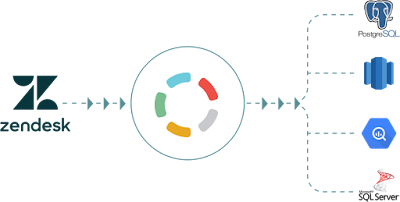Salesforce is ready with its latest features in its winter’20 Release. In this post, I will be sharing most of the release highlights in detail.
Before I dig into the details, just a FYI on when do you get to preview these features — For the Winter ’20 Release, preview instances will be upgraded to Winter ’20 on September 6 and September 7, 2019, and non-review occurrences will be upgraded to Winter ’20 on October 11 and October 12, 2019.
Before I dig into the details, just a FYI on when do you get to preview these features — For the Winter ’20 Release, preview instances will be upgraded to Winter ’20 on September 6 and September 7, 2019, and non-review occurrences will be upgraded to Winter ’20 on October 11 and October 12, 2019.
Salesforce Overall
Lightning Experience for All
Salesforce online training is turning on Lightning Experience on a rolling basis in Winter ’20. Users still have access to Salesforce Classic after Lightning Experience is turned on. Be that as it may, Lightning Experience is the place you need to be for driving business development and improving productivity.
Lightning Configuration Converter
The Actions and Buttons tab in the Lightning Experience Configuration Converter is now GA. Scan your org for standard, custom, and global actions and buttons, and easily move them from Salesforce Classic actions and buttons to Lightning Experience actions. Move all actions and buttons at once, or let the tool guide you through the move process for each object.
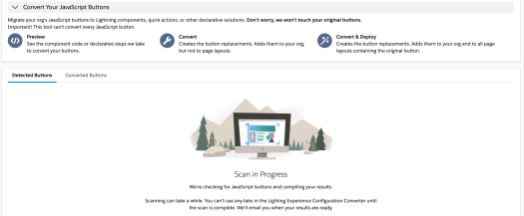
Recycle Bin in Lightning Experience
You never again need to change to Salesforce Classic to get to the Recycle Bin. The Recycle Bin in Lightning Experience works the same as it does in Salesforce training Classic, except for a few differences. In Lightning Experience:
- The org’s Recycle Bin is called Org Recycle Bin (1). The Salesforce Classic name is All Recycle Bin.
- Restore records by clicking Restore (2) instead of Undelete in Salesforce Classic.
- Permanently delete records by selecting them and clicking Delete (3) versus Undelete or Empty in Salesforce Classic.
- You can’t restore reports and dashboards. Switch to Salesforce Classic to access them in the Recycle Bin.
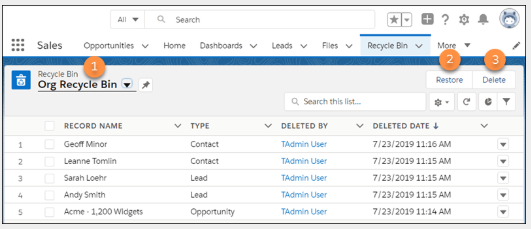
Spare Ink and Paper with Printable View for Lists
Create a dense, moderate, ink-sparing perspective on your rundowns and related records with Printable View.
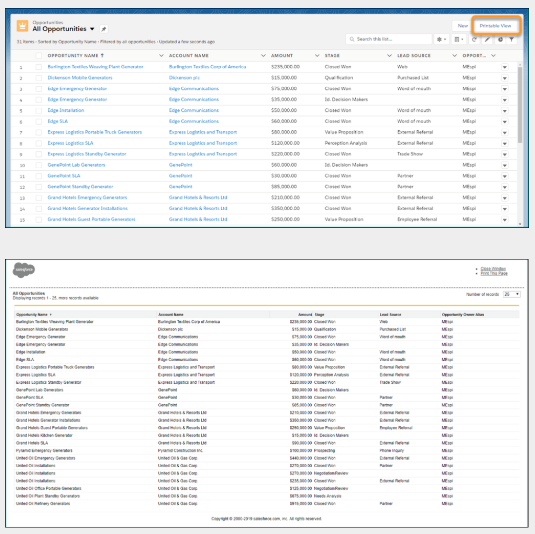
Salesforce Surveys
Get Insight into Support Cases
Send follow-up emails to a case’s contact with a survey question or a link to the survey. Send the email when the auto-response rules are met or when a case is closed.
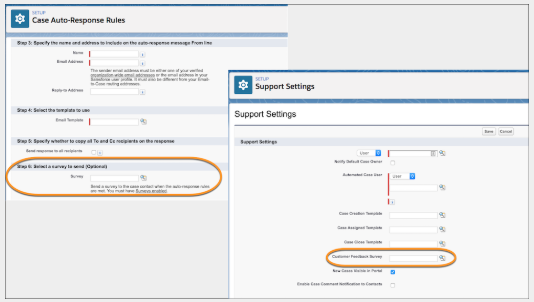
Automate Survey Invitations with Process Builder
Define the criteria for the Send Survey Invitations action type in Process Builder, and email survey invitations to leads, contacts, and users.

Core Sales Features
Opportunity Contact Role
Opportunity contact role customization options give you the flexibility to track and attribute revenue to roles, titles, and individuals. With custom fields and page layouts, validation rules, and Apex triggers, you can design an Opportunity Contact Role to match your specific sales and reporting processes.

Account Team Customization
- Team selling involves complex account relationships. Now you can manage those relationships better in Salesforce certification.
- Collect more information by adding custom fields, buttons, and links to account team layouts.
- Use validation rules, Apex triggers, Process Builder, and workflow rules with account teams to help keep data clean and minimize manual data entry.
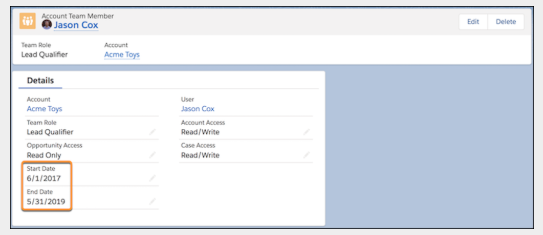
The Object Manager now includes Account Team Member so that you can add custom buttons, links, and fields to the account team member layout.
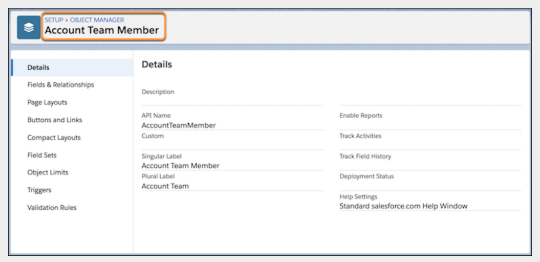
You can also add custom buttons to the Account Team related list.

The Account Team Member object is available in Process Builder.
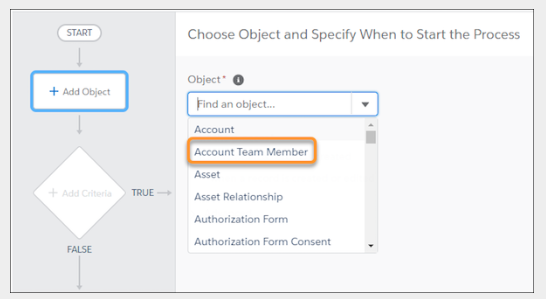
Track Changes with Field History Tracking and Audit Trails
Price book entries now support field audit trails and field history tracking, so now you can easily track changes to price book entry fields.
Sorting, Dependent Picklists, Default Product Quantity, and a ListView for Teams
Sales teams working in Lightning Experience can now set the order of products listed on an opportunity. Help reps add products faster by using dependent pick lists and a default quantity for opportunity products. A new list view on the opportunity page helps sales managers zero in on a team’s progress.
Control Who Gets Read Access to Custom Metadata Types
Use profiles and permission sets to assign read access to users for custom metadata types. As of Spring ’19, you can block all API read access to custom metadata types for users who don’t have Customize Application permission. Now you can grant API read access to specific metadata types for users and user profiles, even if they don’t have the Customize Application permission.
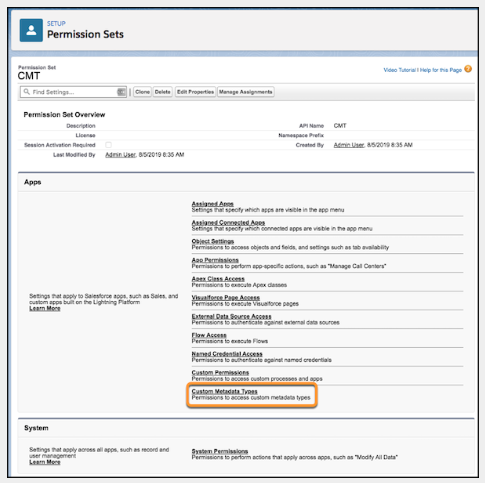
Create Scratch Orgs with More Features
A scratch org is a dedicated and configurable Salesforce administrator certification environment that you can quickly spin up for many different purposes. It can be your own personal development environment, or you can create a headless scratch org for automated tests. You can create scratch orgs if you turned on Dev Hub in your production org or a Developer Edition org, or have a Dev Hub trial org.
Lightning Components
Lightning Web Components: Open Source
The Lightning Web Components framework is now open-source, empowering you to explore the source code, customize the framework to your needs, and build enterprise-ready web components on any platform, not just Salesforce.
Why: In the past, you had to use different frameworks to build different sides of an application. For example, you used Aura to build the employee-facing side of an application on Salesforce. You have used React, Angular, or Vue to build the customer-facing side of the application, and you deployed it on Heroku or on another platform. Today, you can utilize Lightning web segments to construct the two sides of the application.
The benefits are significant. You can now learn one framework instead of several. You can share code between apps.
Add Lightning Web Components as Custom Tabs
Make a Lightning web segment accessible as a custom tab in a Lightning Experience app and in the Salesforce app.
Add the lightning__Tab focus to the part’s arrangement document. The <component>.js-meta.xml configuration file defines the metadata values for the component, including the setting to allow usage in a custom tab.
<?xml version="1.0" encoding="UTF-8"?>
<LightningComponentBundle xmlns="http://soap.sforce.com/2006/04/metadata">
<targets>
<target>lightning__Tab</target>
</targets>
</LightningComponentBundle>
Create a custom tab for this component.
To display the component in a custom tab:
For a Lightning Experience application, add the part to the App Launcher.
For the Salesforce portable application, add the part to the Salesforce application route menu.
Aura Components in the UI Namespace Are Being Retired
The UI components are scheduled for retirement in all Salesforce orgs in summer ’21. Use similar components in the lightning namespace instead. Retiring our legacy components enables us to focus on components that match the latest web standards in performance, accessibility, user experience, and internationalization.
Examples: Use these recommended alternatives for the retired Aura components.
Ui: inputDate
Replace with lightning: input using date type.
ui:button
Replace with lightning:button, lightning:buttonIcon, or lightning:buttonIconStateful. For button groups, use lightning:buttonGroup.
Ui: inputText
Replace with lightning: input using text type.
Have a look at the changed components in Lightning Web Components.
Lightning App Builder
Lightning Record Pages for the Phone Form Factor
Lightning record pages are no longer limited to Lightning Experience on the desktop! If your org has opted into the new Salesforce course mobile app, you can see the same record pages on desktop and the mobile app. go one step further and address the needs of different users by assigning one custom record page for desktop users and another for mobile app users.
When you create a record page in the Lightning App Builder, you can select a page template that matches the form factor that you’re designing the page for.
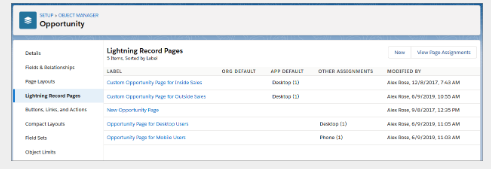
Pages that you already have in your org support both form factors by default. With a few exceptions, the custom and standard components on those pages work seamlessly across desktop and mobile.
- List and Related List Components Are Optimized for the New Salesforce Mobile App
- We updated the ListView, Related List — Single, Related Lists, and Related List Quick Links components to support mobile navigation and the new Salesforce mobile app.
- Here’s how to do it: To add the Related List — Single and Related List Quick Links components to the new Salesforce mobile app, add the components to a Lightning page in the Lightning App Builder while in the mobile view.
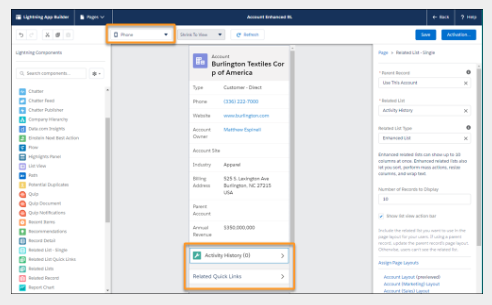
When you place the ListView component on a record page, a View More button loads more records in batches, so you can easily get more records or scroll to the information you want.
Select a Lightning Page Template Based on Form Factor
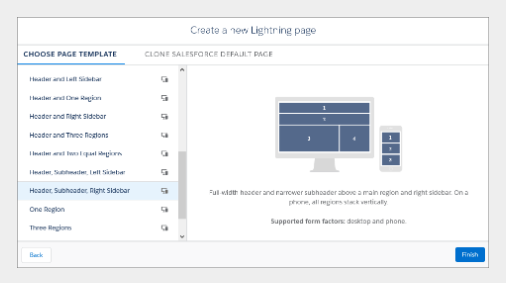
Standard and custom templates now have an icon and description text that indicates whether the template supports desktop, phone, or both.
View Supported Form Factors in the Component Palette
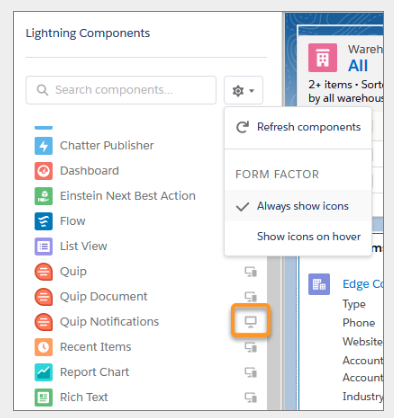
Lightning App Builder component palette now has an icon that represents the form factors that it supports.
Set Record Page Component Visibility Rules Based on Device
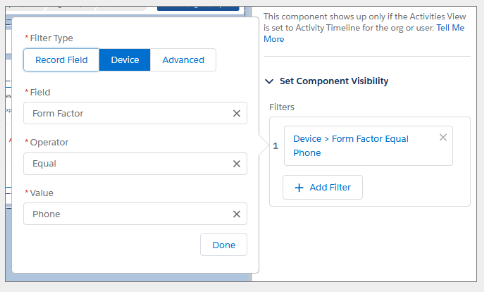
For components on record pages, you can now show or hide a standard or custom component on a record page based on the device it’s viewed on.
Approval Process
Increased Limits for Approval Processes
Your org can now have up to 1,000 active and 2,000 total approval processes. Each object can have up to 300 active and 500 total approval processes.
Manage Delivery Settings for Approval Requests
Use Notification Builder to choose desktop and mobile delivery channels, including supported Salesforce apps, for standard notification types. Previously, Salesforce online training Hyderabad defined the delivery channels for standard notifications. Now you have more control over approval request notifications.




















